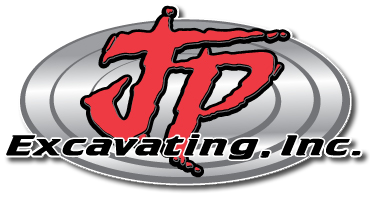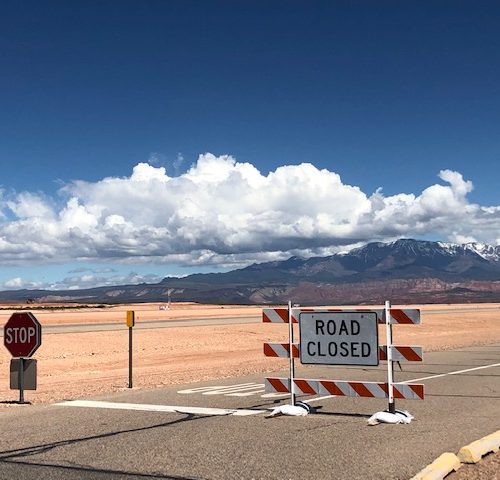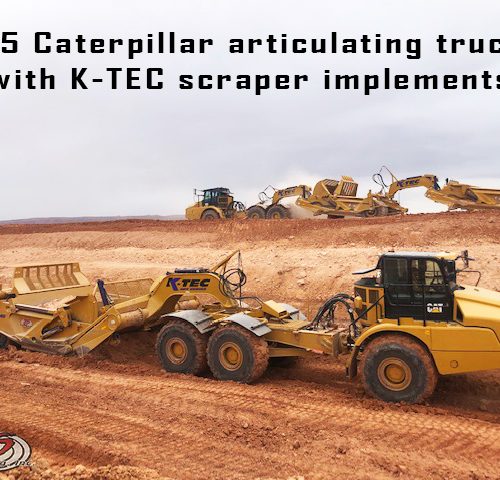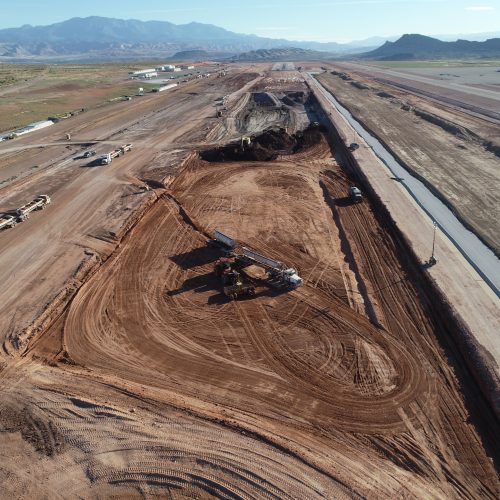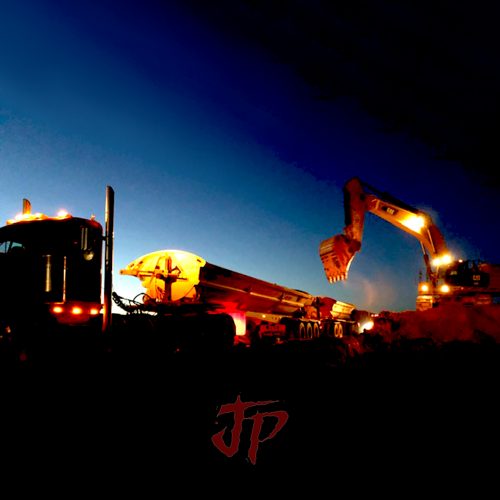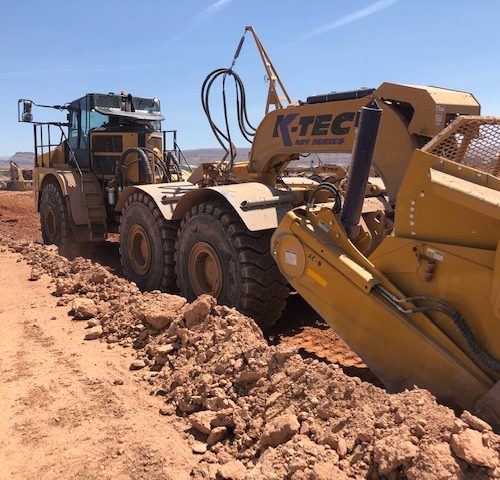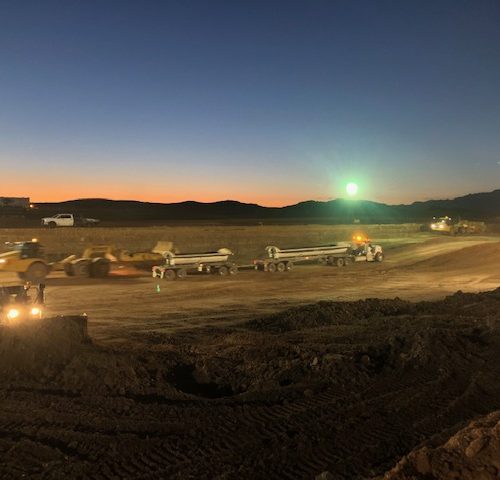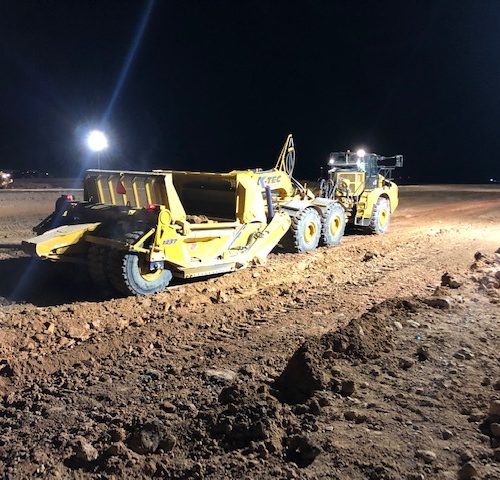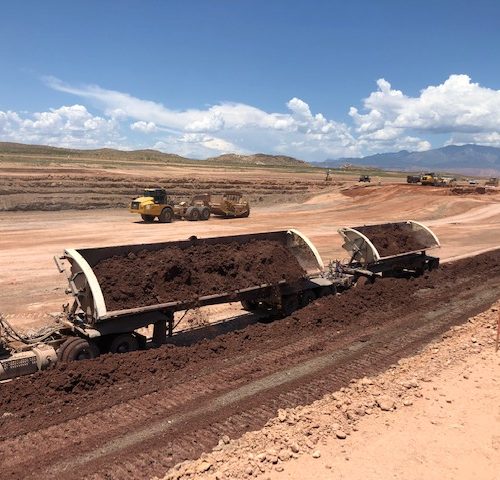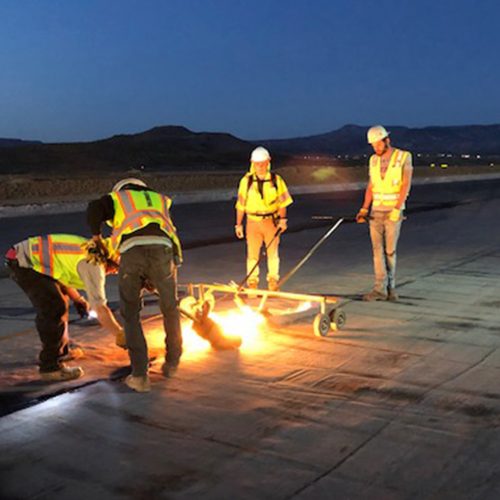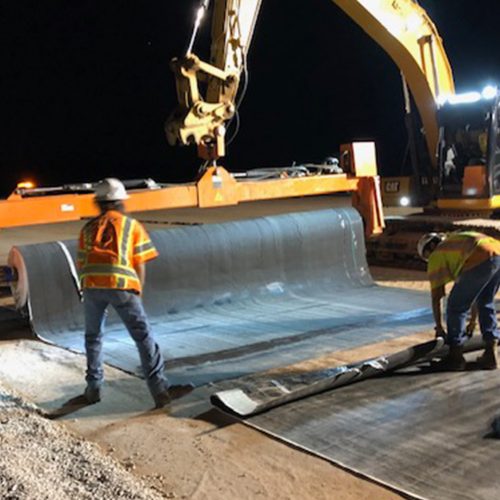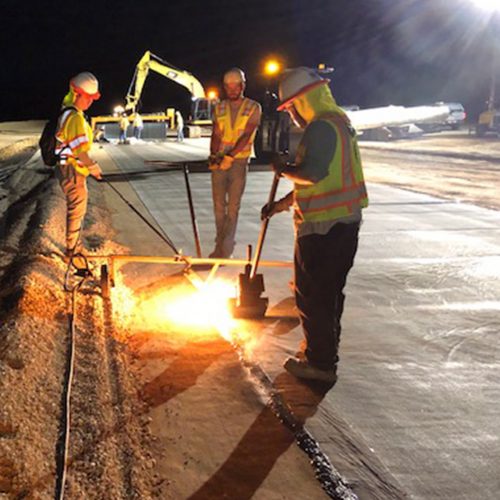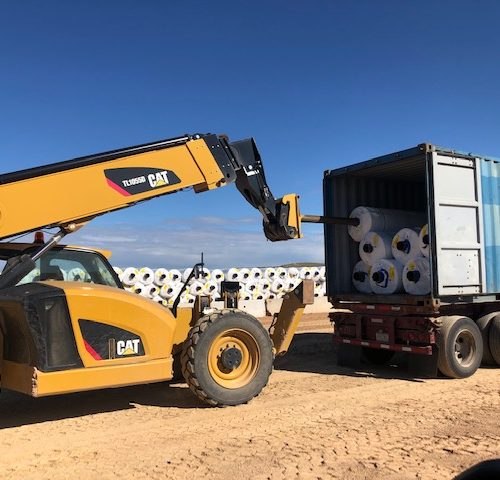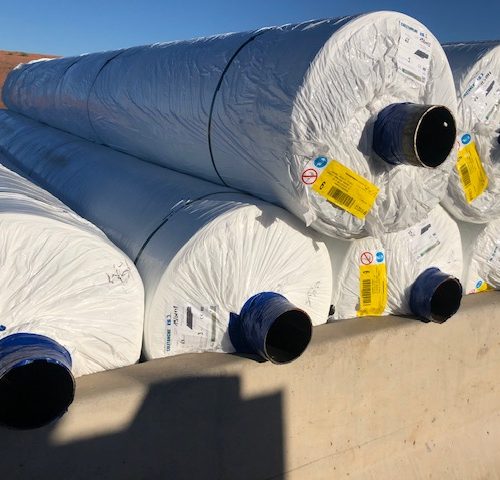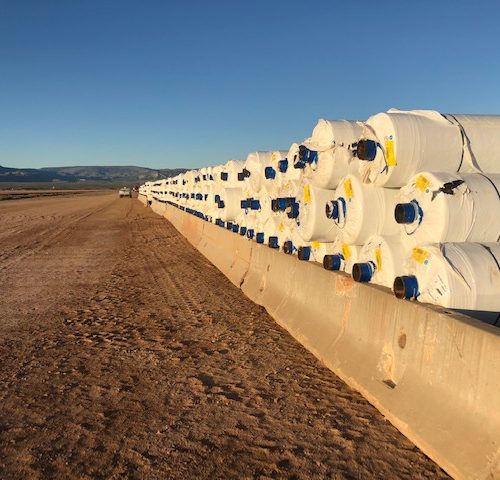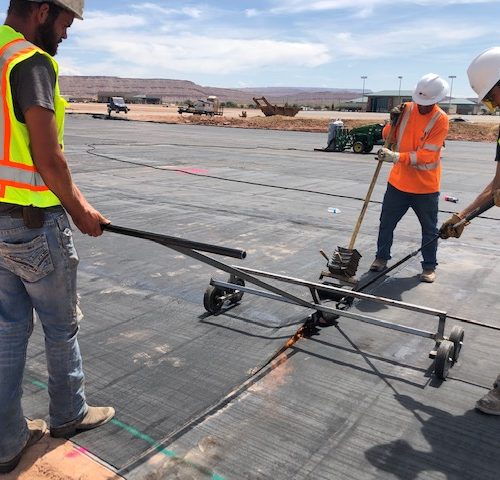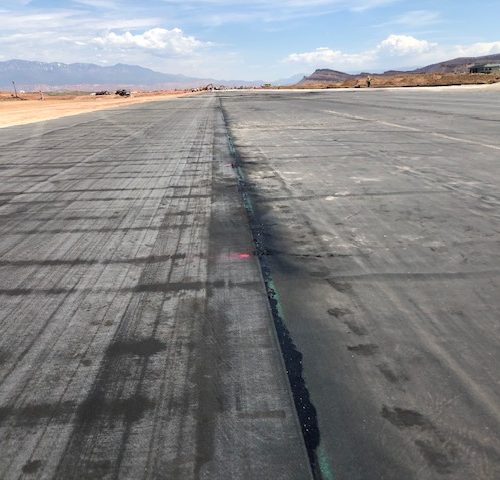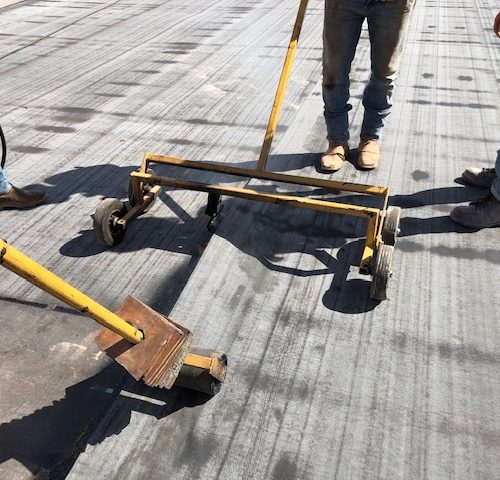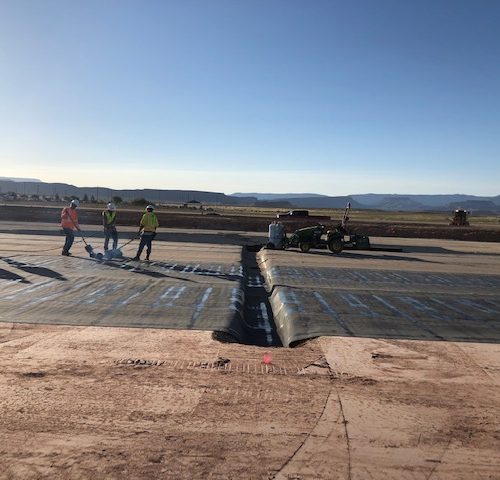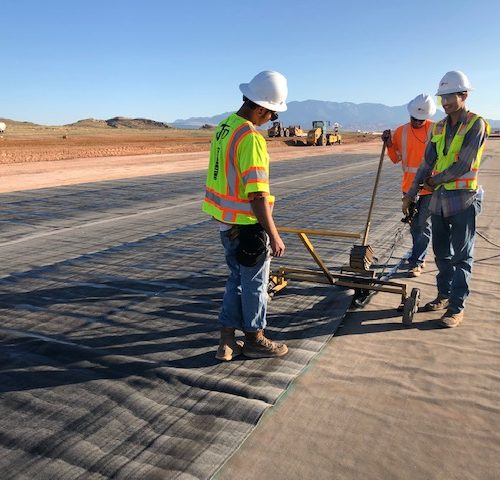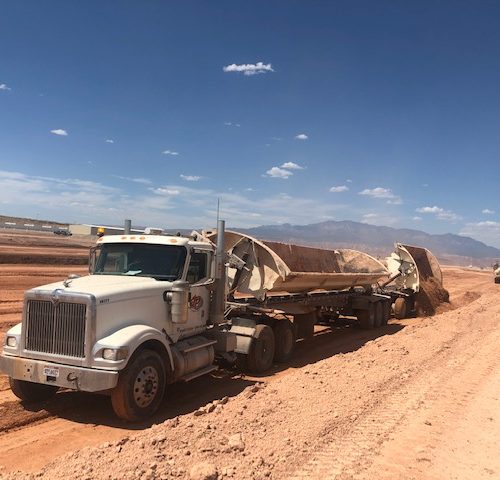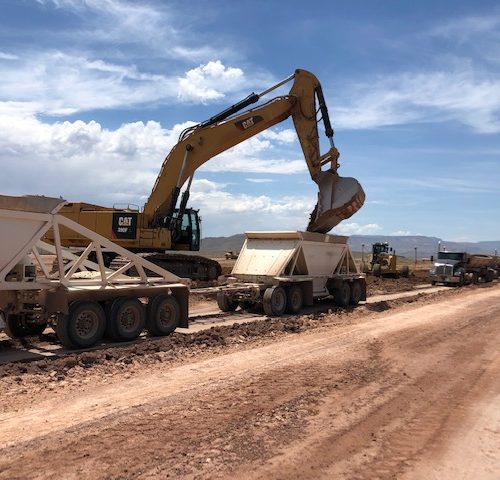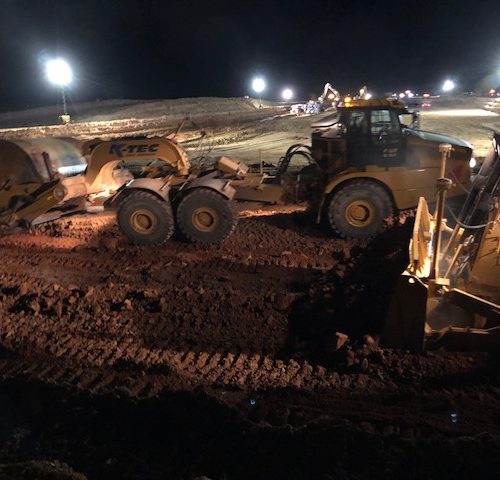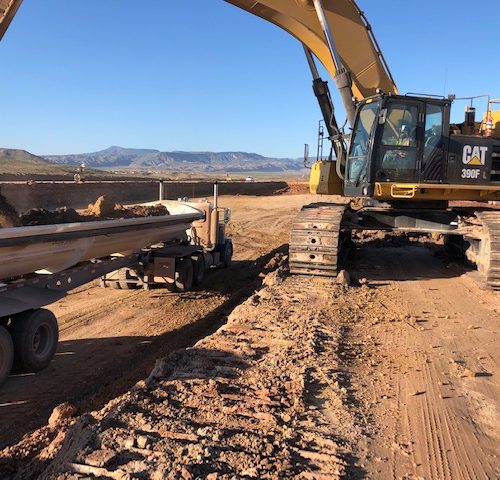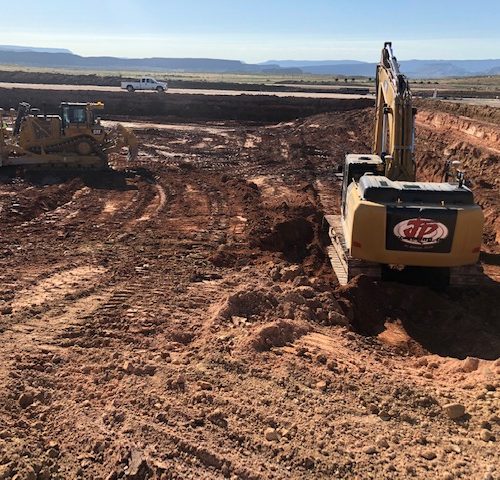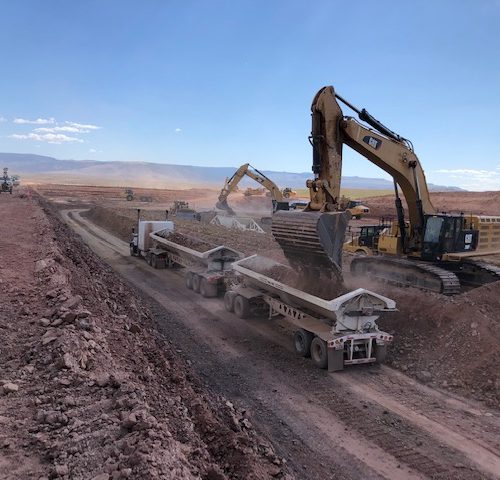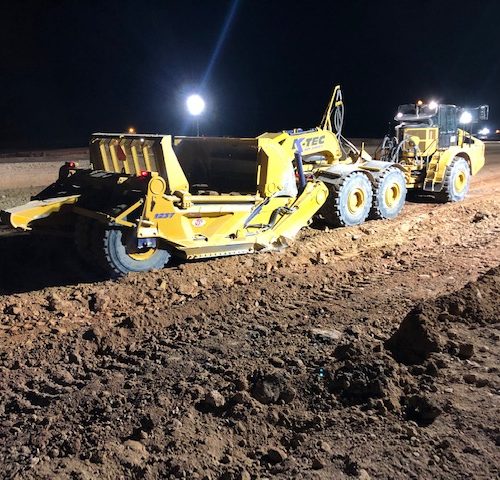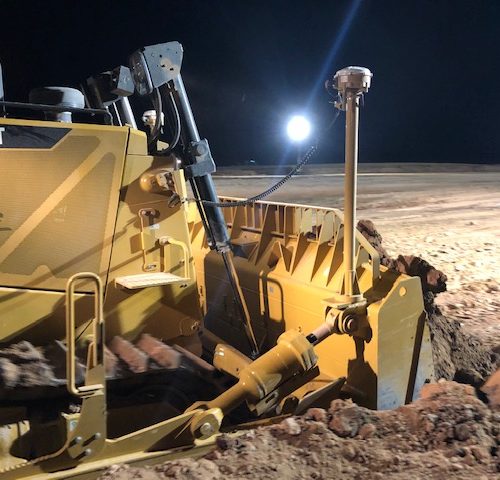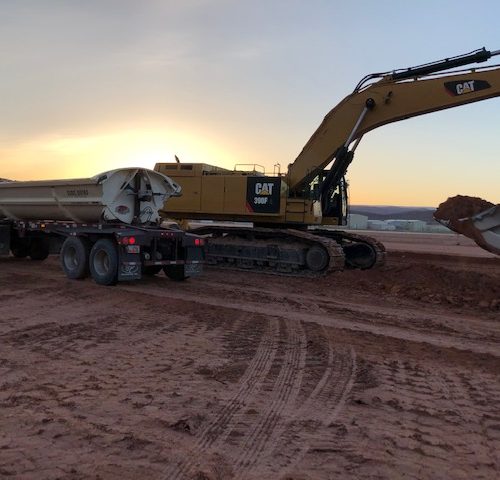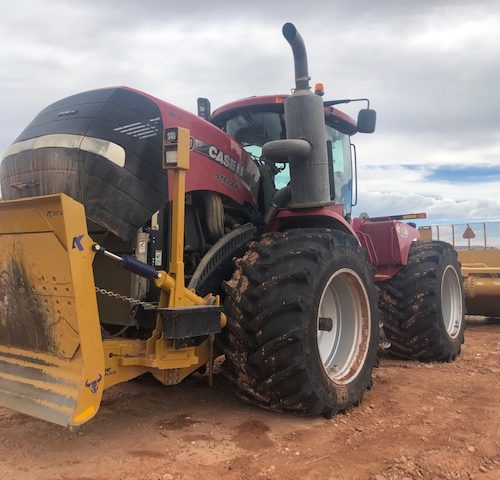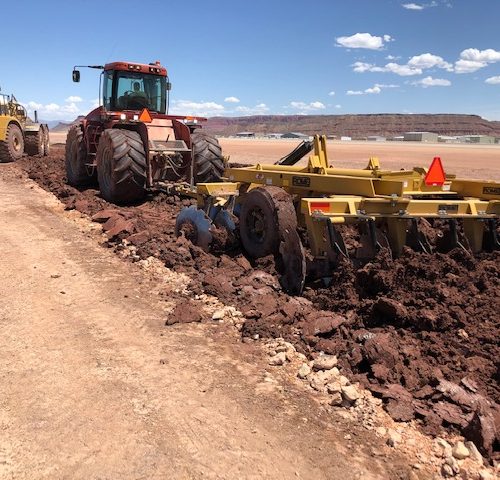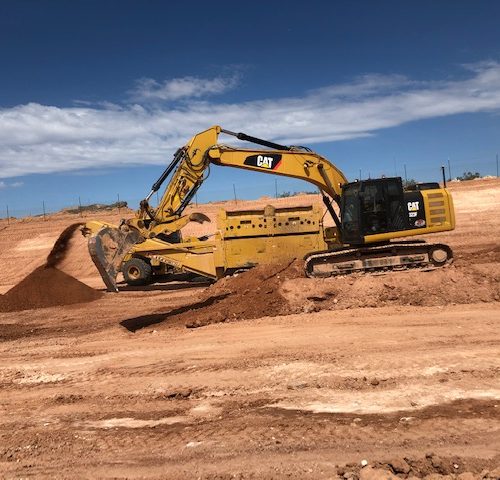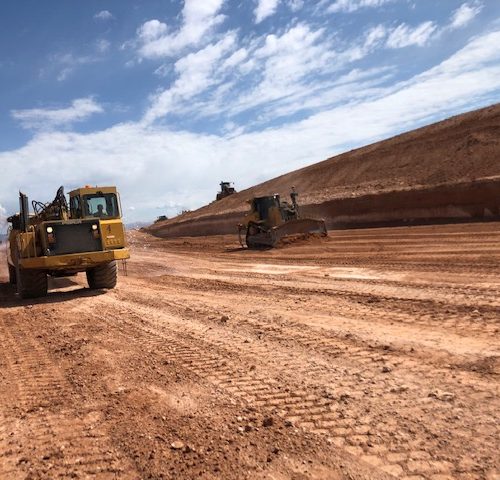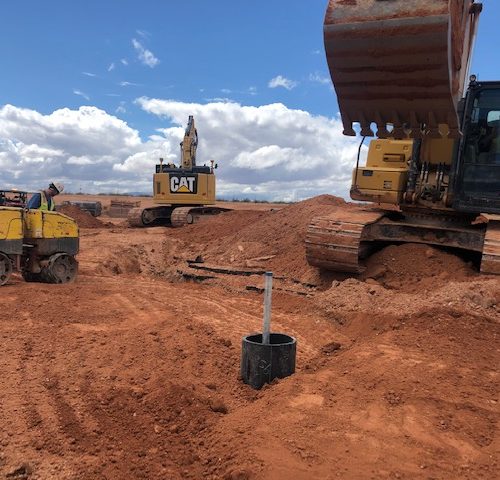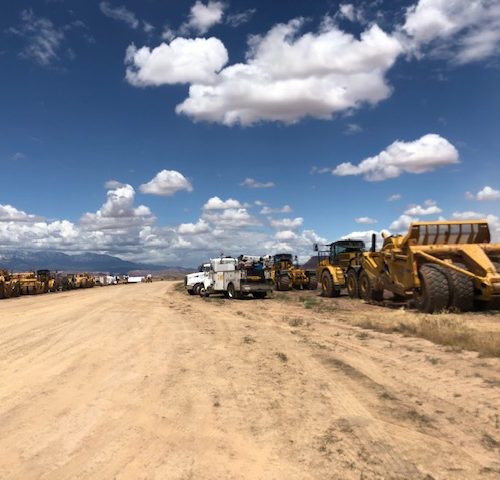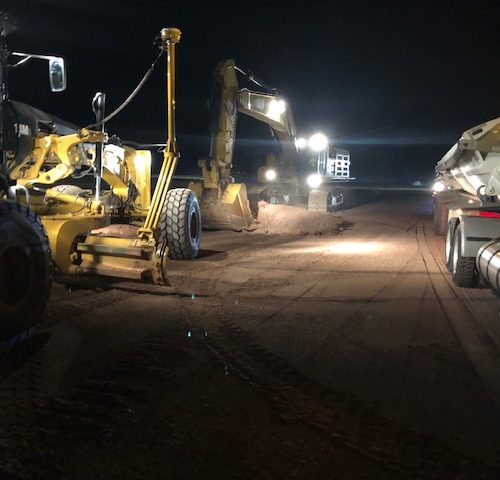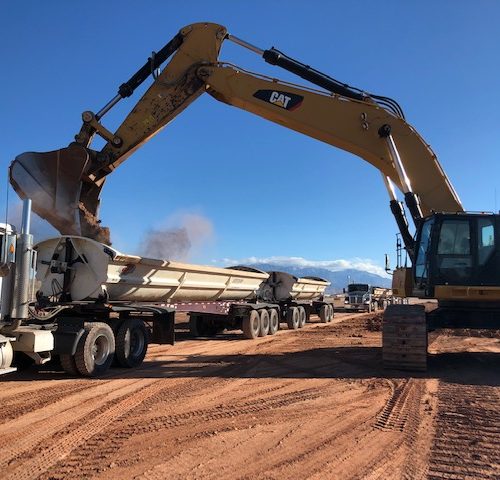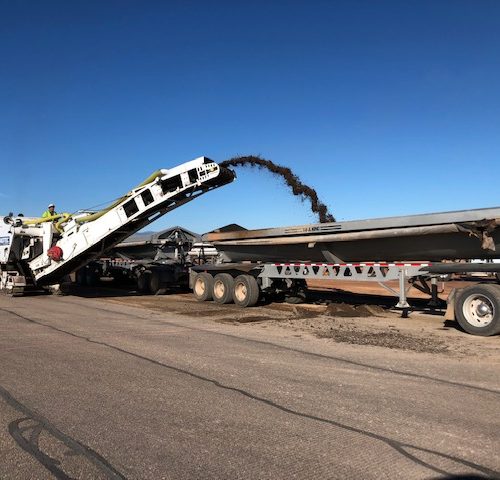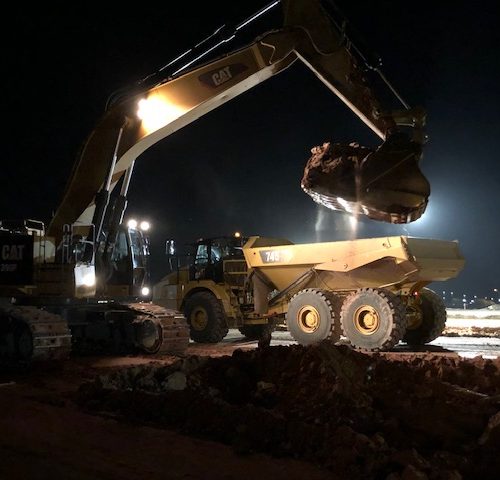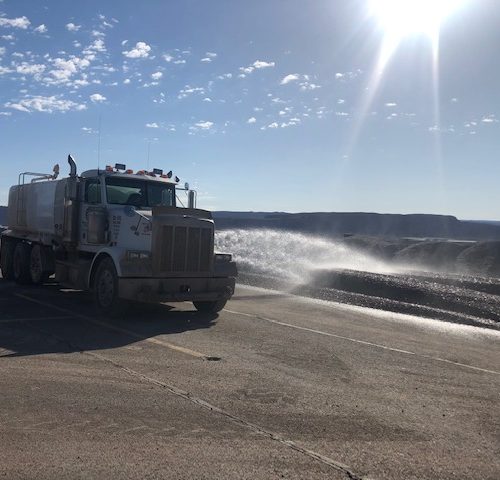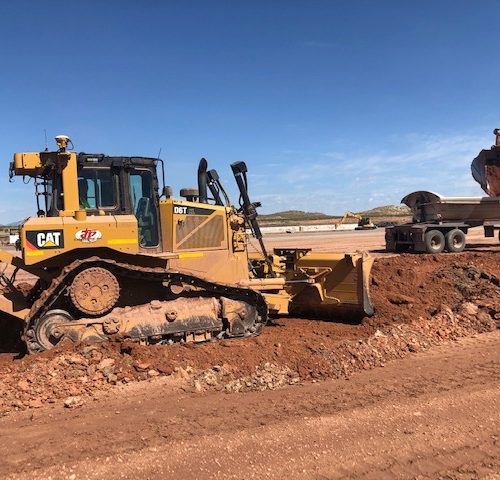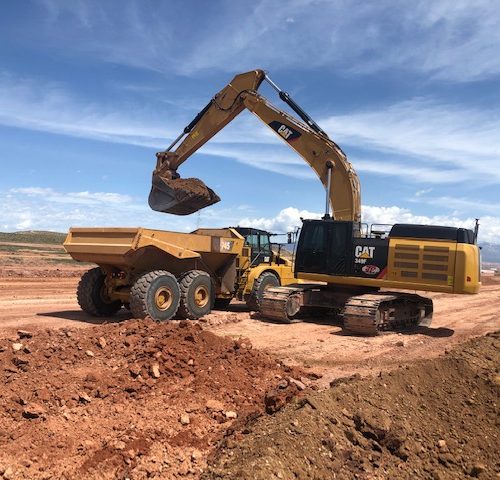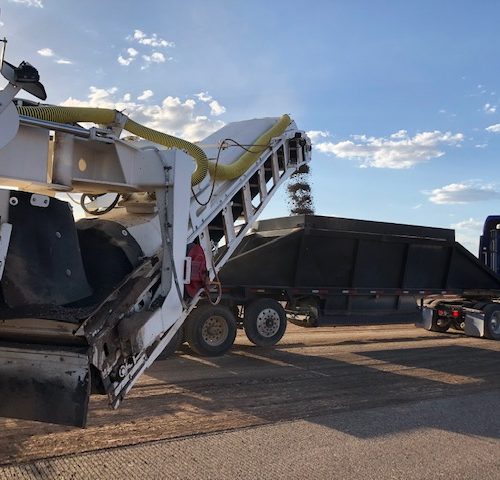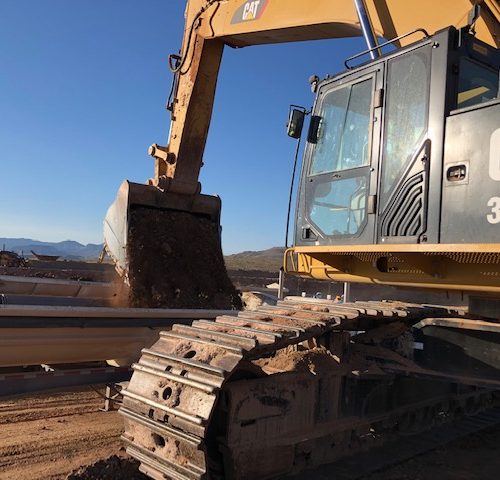The St George Regional Airport runway reconstruction project started on May 29, 2019 with only a hundred and thirty calendar days to complete it. Because of the deadline, we worked 6 days a week around the clock. During the dirt moving portion of the project, JP Excavating was moving fifty thousand yards a calendar day. It would be like building a Walmart site in two days. It’s a 5,400 foot long project. The grading goes from 260 feet on the left side of the runway to 400 feet to the right side of the runway so there’s about six hundred and fifty feet wide of some type of grading that happens for over a mile in the middle of the runway. There’s a hundred and ninety foot wide existing runway that we over excavate down seventeen feet and put it back in with material that the soils engineers have deemed would remedy the fix for the problem that the airport was experiencing.
Judd Palmer, owner of JP Excavating, leads out with finding the blue clay and deciding the haul patterns. With a seasoned and knowledgeable team, the excavating work is very fast and efficient. Because of the inconsistency and diversity of soils on this project, things can change in a moments notice and the heavy equipment drivers and technicians need to be able to react quickly.
Before we started, there was a lot of expansive clay on the site, that when it would get wet it would change its volume and shrink or swell. It was causing the runway to have waves. By excavating it down the way that we’re doing and putting back in suitable structural material, it would make it to where that doesn’t happen.
Another thing that’s unique to this project is there’s a bituminous liner. It’s a composite material that has a felt-like fabric woven with like an asphalt emulsion. It’s a water impervious liner that goes basically 500 feet wide starting at the center line of the runway. It’s like putting a 500 foot roof over the top of the runway so that water will never get back down to this expansive clay and cause it to activate.
The liner is a product that is manufactured in France. For the first part of the week, we’ve had a factory representative here on site. He’s been thoroughly impressed with our crews and their efficiency and the kind of product that we’re turning over to our client.
“It’s been on everyone’s mind if we’re gonna have enough material to replace the clay. For one, we don’t totally know what’s there. The second thing was making sure all the clay that was here, that we could get enough suitable to build that bottom layer.”
“Mixing the clay has been a considerably larger project than we anticipated just because within the clay there’s about ten different layers that we have to blend together to come up with the proper mix of clay. It goes up and down like this in a mountain, so it’s not like a level plane.”
“So we have to chase it, find the mountains, go down, but then even when you find it, sometimes it’s not suitable because it’s rocky and more petrified. So it’s been there longer. So we have to find the stuff that isn’t Rocky, we dispose of the stuff that is rocky, and then we start mixing it. But we’re pulling a mix of upwards of 10 feet deep of 10 different types of clay to come up with one unique blend that comes all together for the final product.” — Judd Palmer
“Since about Christmas I’ve been really nervous, I won’t lie. I’ve spent a lot of sleepless nights trying to think about ways to make it more efficient and keep everything running, preparing, ordering parts. What am I gonna need? Who do I need to talk to? Lining up my fuel setup. Lining up people to help me with tires.
I was pretty nervous coming into it. The first couple of weeks were a little bit rough. Some long days. We’ve got four 7-45 haul trucks pulling 37 to 40 yard scrapers. I’ve got five wheel-loaders, two d8 dozers. We’ve got a 390 excavator caterpillar. Caterpillar 374. A few smaller ones on site, there were seven total excavators out here. Two compactors. Three tractors, two of them are controlling your grade with GPS. We’re running about 96 OTR tires, off-road type tire. They’re for your dirt style construction tire. Just in my fleet of trucks, I’m running 141 tires that we’re taking care of. We’re burning about 4,000 gallons of fuel per day. Dong services and equipment oil changes, we’re going through about 300 gallons of oil a week keeping up with that.
I’ve got parts coming out of Canada for these k-tec scrapers. You know, you’re a week lead time even at best case. I can get smaller parts overnighted, but everything’s coming through customs so it takes a little bit of time. I’ve got parts coming off the East Coast with some of the new equipment we’ve purchased for this project. That also is a week lead time. And it’s all big stuff, you know, GET, things like that that I’m not able to find in this local area, so I’m having to truck it a week out, some of it. It was a little bit of thinking, staying ahead of it. A few issues, but overall, I mean you just can’t be happier with how it all went.
The major parts coming to an end. We’re going to be shutting some of the trucks down here shortly. We’ll switch to a finished grade kind of atmosphere where we gotta clean everything up. You know, make everything look pretty and get to that point where we can start working behind and buttoning everything up.
You just don’t get to work on a project this size every day. There are probably only a handful in my career that are check marks that I would call big projects, that are worthy of that. But definitely it’s something to be proud of for sure, for everybody. I love the guys I work with, every one of them. Man, they’ve worked hard. They gave it everything they have.” It’s great! — Brandon Burrows (JP Excavating Equipment Manager)
